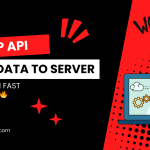The Best Fluffy Pancakes recipe you will fall in love with. Full of tips and tricks to help you make the best pancakes.
The Growing Importance of Edge Computing in IoT
As the Internet of Things (IoT) continues to expand, the need for efficient data processing at the edge has become increasingly critical. Edge computing, which involves processing data closer to the source rather than relying solely on centralized cloud servers, has emerged as a game-changer in the realm of IoT.
Redefining Real-time Data Processing
One of the key advantages of edge computing in IoT is its ability to revolutionize real-time data processing. Traditionally, IoT devices would send data to a centralized cloud server for analysis and decision-making. However, this approach often resulted in latency issues, especially in applications requiring instant responses or actions.
By leveraging edge computing, data processing tasks can be carried out locally on the device or at the edge of the network. This means that critical data analysis and decision-making can occur in real-time, without the need to wait for data to travel back and forth to the cloud. As a result, edge computing enables faster response times, enhances system reliability, and reduces the strain on network bandwidth.
The Benefits of Real-time Data Processing at the Edge
The shift towards real-time data processing at the edge offers numerous benefits for IoT applications. For instance, in industries such as manufacturing, healthcare, and transportation, where split-second decisions can have significant implications, the ability to process data instantly at the edge can improve operational efficiency, ensure timely interventions, and enhance overall safety.
Furthermore, edge computing enables organizations to address data privacy and security concerns by keeping sensitive information localized and reducing the risk of data breaches during transit to the cloud. This localized data processing approach also helps in compliance with data regulations and standards.
Conclusion
Edge computing is reshaping the landscape of IoT by redefining how real-time data is processed and acted upon. By leveraging the power of edge computing, organizations can unlock new opportunities for innovation, improve operational efficiency, and deliver enhanced user experiences. As the IoT ecosystem continues to evolve, the role of edge computing in enabling real-time data processing will only become more prominent, driving the next wave of IoT advancements.




